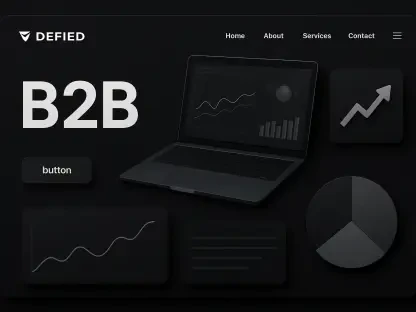When volume is the game and retention is the scoreboard, the bottleneck isn’t the camera—it’s deciding what to make, shaping the story fast, and getting it everywhere audiences actually watch without letting quality slide or brand voice drift. That tension between speed and craft is exactly where VID.co’s AI-enhanced, full‑stack video pipeline plants its flag, promising a production engine that ramps output and improves performance while keeping creative judgment with humans.
The pitch is bold: integrate AI across ideation, scripting, editing, packaging, and multi‑platform delivery so creative teams spend less time pushing files and more time steering narrative and strategy. Instead of a single tool, this is presented as an operating system for modern video, with retention data and search intent modeling feeding decisions from the first topic shortlist to the final thumbnail.
Context And Why It Matters
YouTube-first is now a strategy, not just a channel, and short-form fragmentation demands platform-native packaging at scale. VID.co steps into that reality with a system that treats video as an iterative, measurable process rather than a one-off craft cycle. The goal is not to replace editors or producers but to compress low‑leverage tasks and route high‑leverage judgment to the right people at the right moment.
Moreover, the release aligns with a clear industry trend: “create once, atomize many.” Long-form pieces become reservoirs of moments that feed Shorts, Reels, TikTok, LinkedIn, Facebook, and X, each with tailored hooks, captions, and metadata. That approach rewards cadence and experimentation, and it fits the algorithms’ appetite for fresh, platform-native content.
How The System Is Built
At its core, the pipeline runs a human‑in‑the‑loop model. AI handles repeatable friction—topic clustering, script variants, structural edits, metadata drafting—while teams keep control of brand voice, narrative arcs, and final calls. This balance is intentional; the gains come from speed and consistency, but differentiation still lives with humans.
Under the hood is end‑to‑end orchestration. Topic selection draws on search intent and audience demand signals; script generation produces multiple angles; an AI‑assisted storyboard streamlines approvals; automated rough cuts, filler‑word removal, and pacing tweaks drive the first edit; metadata and packaging get generated for rapid testing; and distribution pushes atomized outputs to each platform’s native format.
Pre‑Production Intelligence
The pre‑production layer targets the dreaded blank page. Topic discovery uses clustering against trending queries and evergreen interest, then ranks ideas by predictive engagement and search opportunity. That means teams begin with a prioritized slate rather than an open field.
From there, script drafting produces variants tuned to different hooks and structures, letting stakeholders compare narrative options without long back‑and‑forth. AI‑assisted storyboards add visual clarity early, shrinking approval loops and anchoring production plans to the most promising angles.
Editing For Retention
Post‑production features reflect a performance mindset. The system generates rough cuts, trims silence and filler, proposes B‑roll, and suggests punch‑ins and hook sharpening. These recommendations are not generic; they reference high‑retention patterns from comparable channels and formats, creating a feedback loop between editing choices and expected watch‑through.
Crucially, the guidance remains suggestive, not prescriptive. Editors can accept, modify, or override, using the tool as a fast pass that flags pacing dips and narrative lulls while preserving creative intent. That balance helps avoid the flattened, same‑y feel that can come from fully automated edits.
Cross‑Platform Repurposing
One of the system’s marquee strengths is atomization. It scans long-form videos to identify high‑impact moments—reveals, payoffs, insights—and turns them into shorts, each with tailored aspect ratios, durations, and on‑screen text that match platform norms. Packaging follows suit, with titles, descriptions, tags, and hashtags tuned for each venue.
This matters because reach now depends on both frequency and fit. A single upload becomes a content tree with dozens of branches, each capable of independent testing. Over time, that multiplies learning and compounds distribution without multiplying manual workload at the same rate.
Metadata, Captioning, And Localization
The pipeline automates titles, thumbnails, descriptions, and tags so teams can spin up multiple packaging tests quickly. Thumbnail generation focuses on clarity and emotional salience—faces, contrast, and simple text—while title variants probe different promises or tensions.
On accessibility and reach, auto‑captioning and multi‑language subtitles broaden addressable audiences and support silent‑autoplay environments. For global programs, this reduces turnaround for localized releases and offers a path toward market‑specific creative adaptation beyond subtitles when teams decide the lift is justified.
Analytics And Feedback Loops
Performance data fuels the system. Watch‑through, completion, and segment‑level retention flow back into planning and post, surfacing what hooks hold attention and where viewers drop off. Over time, that turns into practical guidance—pacing norms for certain topics, cut points that consistently work, and packaging cues that move click‑through without clickbait.
This loop also underwrites predictive features: engagement scoring for topics, in‑edit prompts for potential retention cliffs, and suggestions about when to reframe or reorder segments. It’s creative work, but with a dashboard quietly steering around avoidable friction.
Governance And Brand Safety
Speed without oversight is a trap. The system builds in checkpoints where human reviewers enforce brand voice, visual standards, and legal guardrails. That includes managing rights for third‑party assets, verifying claims, and keeping executive or regulated content within compliance boundaries.
These controls also counter AI homogenization. By elevating curation and narrative intent as mandatory steps, the pipeline aims to keep outputs distinct even as underlying processes become standardized.
Performance And Outcomes
The operational story centers on velocity and scale. Production cycles shrink as first drafts, first cuts, and first packages arrive sooner, freeing teams to refine rather than assemble. As volume grows, cost per asset tends to fall because the same infrastructure supports more output.
Consistency also improves. A reliable publishing rhythm across platforms builds audience expectation and algorithmic favor, while unified packaging keeps brand presence cohesive. When combined with benchmark‑informed edits, channels often see steadier watch‑time, better retention through the first 30–60 seconds, and more shots on goal with thumbnails and titles.
Where It Excels And Where It Falters
The strongest fit appears in three scenarios: creator channels chasing steady growth, executive communications that need tight control and quick turnaround, and enterprise programs running multi‑market, multi‑format series. In each case, repeatable structure plus human guidance yields tangible gains.
Limitations surface around data quality, platform volatility, and the risk of sameness. Models can misread intent or overfit to recent trends; algorithms change; and without strong editorial direction, outputs can feel interchangeable. Measurement across platforms adds complexity, and teams still need change management to adopt new workflows.
Market Trajectory
The release lands in a moment when editorial craft and machine analytics are clearly converging. More tooling is leaning into benchmark‑led editing, automated packaging for rapid experiments, and deeper ties between content systems and marketing stacks.
Next steps likely head toward finer personalization—hooks tuned by audience segment, real‑time retention forecasting in the timeline, smarter thumbnail and title selection using multi‑armed bandit testing, and tighter integration with CMS, CRM, and ad platforms to close the loop from impression to lift.
Verdict And Next Steps
This review found that VID.co’s AI‑enabled pipeline delivered a credible path to faster, more consistent video output without stripping away human creative control. The integration from topic modeling through atomized distribution reduced friction where it hurts most—approvals, first cuts, and packaging—while retention‑aware analytics anchored decisions in outcomes rather than hunches. Recommended next steps included investing in editorial oversight to prevent sameness, pairing the system with clear brand guidelines, and establishing measurement plans that normalize performance across platforms.
It also concluded that teams benefited from an experimentation mindset: run packaging tests in cycles, promote winners quickly, and feed learnings back into pre‑production. For enterprise use, governance frameworks around rights, compliance, and privacy were deemed essential, as was change management to align agencies and in‑house teams. Finally, it judged that the real upside came from compounding effects—velocity, cadence, and feedback loops—and that organizations prepared to lean into those rhythms stood to gain durable advantages in reach, retention, and cost efficiency.









